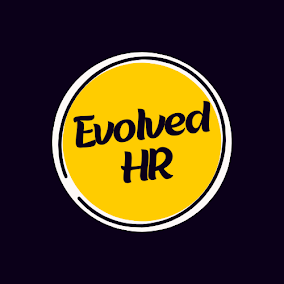Unleashing the Power
of Recruitment Analytics: Driving Smart Hiring Decisions
In the
rapidly evolving landscape of talent acquisition, data-driven insights have
emerged as a game-changer. Recruitment Analytics, a strategic approach that
leverages data to optimize recruitment processes, is transforming how
organizations identify, attract, and retain top talent. In this comprehensive
guide, we delve into the world of Recruitment Analytics, exploring its
significance, key metrics, implementation strategies, challenges, and future
trends.
Understanding
Recruitment Analytics
Recruitment
Analytics involves the collection, analysis, and interpretation of data related
to various stages of the recruitment process. By extracting actionable insights
from this data, organizations can make informed decisions to enhance
efficiency, minimize biases, and improve overall hiring outcomes. From sourcing
and screening to onboarding and retention, Recruitment Analytics empowers HR
professionals with the tools needed to navigate the competitive talent
landscape strategically.
The Significance of Recruitment Analytics
1. Informed Decision Making
Recruitment
Analytics provides evidence-based insights that guide decision-making. Whether
it's selecting the most effective sourcing channels or refining interview
processes, data-driven decisions lead to more successful hires.
2. Cost Efficiency
Data
analysis helps organizations identify which recruitment channels yield the best
Return on Investment (ROI). By focusing resources on the most effective
channels, organizations can optimize their recruitment budget.
3. Diversity and Inclusion
Recruitment
Analytics plays a pivotal role in fostering diversity and inclusion. It allows
organizations to track diversity metrics, identify potential biases, and
implement strategies to create a more inclusive workforce.
Key Metrics in Recruitment
Analytics
1. Source of Hire
Understanding
where successful candidates are coming from is essential. Source of hire
metrics help organizations allocate resources effectively by identifying the
most productive recruitment channels.
2. Time-to-Fill and Time-to-Hire
These
metrics measure the time it takes to fill a vacant position and the time taken
to complete the entire hiring process. Monitoring these metrics helps identify
bottlenecks and streamline processes.
3. Quality of Hire
Quality of
hire metrics assess the performance and longevity of hires. By tracking how
well new employees are performing and contributing to the organization, HR
professionals can fine-tune their selection criteria.
4. Candidate Conversion Rates
Conversion
rates measure how many candidates progress through each stage of the
recruitment process. Analyzing conversion rates helps identify areas where
candidates drop out and allows for targeted improvements.
5. Diversity Metrics
Measuring
diversity metrics, such as gender and ethnicity representation at various
stages of the recruitment funnel, helps organizations track progress toward
diversity and inclusion goals.
Implementing Recruitment
Analytics: A Strategic Approach
1. Data Collection and Integration
Collect
data from various sources, such as your Applicant Tracking System (ATS), career
site, and social media platforms. Integrate these sources to create a
comprehensive data repository.
2. Define Key Metrics
Identify
the key metrics that align with your organization's recruitment goals.
Establish benchmarks based on historical data to measure progress and success.
3. Data Analysis and Interpretation
Leverage
data analytics tools to analyze the collected data. Identify trends, patterns,
and insights that can inform your recruitment strategies and decisions.
4. Continuous Monitoring
Recruitment
Analytics is an ongoing process. Continuously monitor and update your metrics
as recruitment processes evolve and new challenges arise.
Challenges in Recruitment
Analytics
1. Data Quality
Inaccurate
or incomplete data can lead to misleading insights. Ensuring data accuracy and
consistency is essential for meaningful analysis.
2. Privacy and Security
Managing
candidate data ethically and securely is a critical concern. Organizations must
adhere to data protection regulations and ensure candidate privacy.
3. Skills and Training
Effective
utilization of data analytics tools requires a certain level of skills and
training. Investing in training for HR professionals is key to leveraging the
full potential of Recruitment Analytics.
Future Trends in Recruitment
Analytics
1. Predictive Analytics
Predictive
analytics uses historical data to predict future hiring outcomes. This allows
organizations to anticipate trends, identify potential challenges, and make
proactive adjustments.
2. Artificial Intelligence (AI) and Machine
Learning
AI-powered
tools can streamline the screening process by analyzing resumes, identifying
top candidates, and even predicting their likelihood of success in a role.
3. Enhanced Candidate Experience
Recruitment
Analytics can also be used to enhance the candidate experience. By analyzing
candidate feedback and behavior, organizations can refine their processes to
create a more engaging and efficient experience.
Closing Thoughts
In a world
driven by data, Recruitment Analytics has emerged as an indispensable tool for
HR professionals. By harnessing the power of data-driven insights,
organizations can optimize their recruitment processes, make informed
decisions, and secure top talent that drives their growth and success. As the
landscape of talent acquisition continues to evolve, Recruitment Analytics will
play an increasingly crucial role in shaping the future of HR and reshaping how
organizations approach talent acquisition in an ever-changing world.






.jpg)

.png)
No comments:
Post a Comment